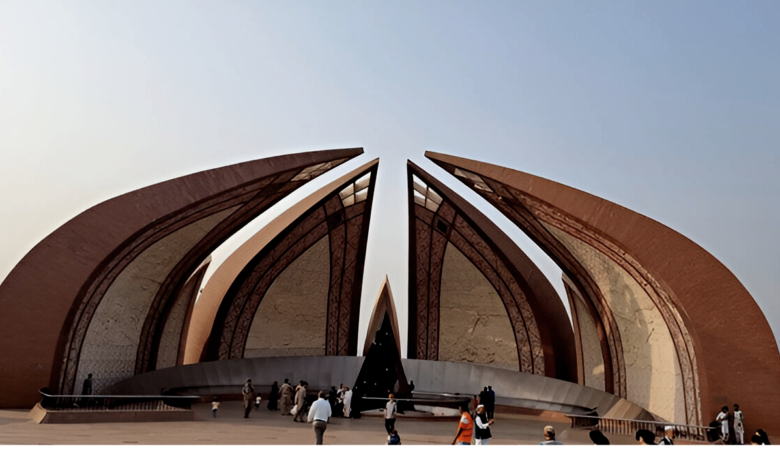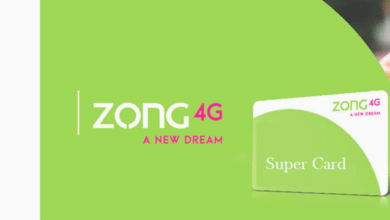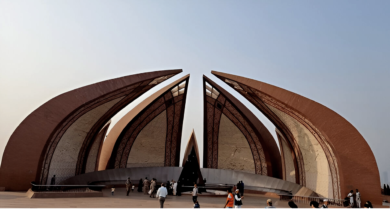
The metaverse presents an unprecedented opportunity for Pakistani artists to transcend geographical boundaries and monetize their creativity in revolutionary ways. As a fusion of virtual reality, blockchain technology, and digital economies, the metaverse allows artists to showcase and sell their work as NFTs, host virtual exhibitions, and engage with global audiences like never before. For Pakistani creators whether visual artists, musicians, or digital designers this emerging digital landscape offers a platform to bypass traditional art market limitations and establish direct connections with collectors worldwide.
For decades, Pakistani artists have faced challenges in gaining international exposure due to limited gallery access and market constraints. However, the metaverse is changing this narrative by providing democratized spaces where talent speaks louder than location. By leveraging virtual galleries, NFT marketplaces, and immersive experiences, Pakistani artists can now build sustainable careers while preserving their cultural identity. They explores practical strategies for artists to navigate the metaverse successfully, from creating digital assets to monetizing them effectively in this bold new creative economy.
How Pakistani Artists Can Sell in the Metaverse
Understanding the Metaverse and Its Potential for Pakistani Artists
The metaverse is a collective virtual space where users interact through avatars, engage in commerce, and experience digital environments. For artists, it serves as a limitless gallery where creativity transcends physical boundaries. Pakistani artists, whether painters, musicians, or digital creators, can benefit from this decentralized platform by showcasing their work to an international audience without intermediaries.
Steps for Pakistani Artists to Enter the Metaverse
Creating Digital Art for the Metaverse
The first step is adapting traditional art into digital formats. Pakistani artists skilled in painting or sculpture can digitize their work using tools like Adobe Photoshop, Procreate, or Blender. Digital artists can explore 3D modeling, animation, and VR-based creations to enhance their offerings. The key is to produce high-quality, unique pieces that stand out in a competitive virtual marketplace.
Choosing the Right Metaverse Platforms
Several platforms cater to digital artists, each with distinct features. Decentraland, The Sandbox, and Somnium Space allow artists to buy virtual land and set up galleries. OpenSea, Rarible, and Foundation are NFT marketplaces where artists can mint and sell their work. Pakistani artists should research these platforms to determine which aligns best with their artistic style and business goals.
Minting and Selling NFTs
NFTs are the backbone of metaverse art sales. Artists can mint their work as NFTs on blockchain platforms like Ethereum, Polygon, or Solana. This process involves uploading digital files, adding metadata (such as descriptions and royalties), and listing them for sale. Smart contracts ensure artists earn royalties on secondary sales, providing long-term income.
Building a Virtual Presence
A strong online presence is crucial for success. Pakistani artists should create profiles on social media, join metaverse communities, and collaborate with other creators. Hosting virtual exhibitions and engaging with collectors through Discord or Twitter can enhance visibility. Additionally, artists can participate in metaverse events and auctions to attract potential buyers.
Monetizing Through Virtual Experiences
Beyond selling static art, Pakistani artists can explore interactive experiences. Virtual concerts, augmented reality (AR) exhibitions, and gamified art installations offer new revenue streams. Musicians can perform in metaverse venues, while visual artists can design immersive 3D environments that users explore.
Challenges and Solutions for Pakistani Artists
While the metaverse offers vast opportunities, challenges such as internet accessibility, digital literacy, and initial setup costs exist. Many Pakistani artists may lack high-speed internet or advanced hardware, limiting their ability to create and sell in the metaverse. However, initiatives like digital art workshops, blockchain education programs, and affordable VR tools can bridge this gap.
Success Stories of Pakistani Artists in the Metaverse
Shahzia Sikander
Shahzia Sikander, a globally renowned Pakistani-American artist, has seamlessly transitioned from traditional miniature painting to digital and NFT art. Her work, deeply rooted in Mughal miniature techniques, explores contemporary themes of identity and culture. In 2021, Sikander ventured into the NFT space, selling her digital animations and hybrid artworks on platforms like Foundation. Her piece “The Scroll” (a digital reinterpretation of her famous miniature work) gained significant attention in the crypto-art world. By merging classical South Asian art with blockchain technology, Sikander has set a precedent for Pakistani artists in the metaverse.
Ali Sethi
Ali Sethi, the celebrated Pakistani singer, has embraced the metaverse to expand his artistic reach beyond physical concerts. He performed live in virtual spaces like Decentraland, attracting a global audience. Sethi also released limited-edition NFTs of his music, allowing fans to own exclusive digital collectibles. His collaboration with digital artists for immersive VR performances has positioned him as a pioneer in Pakistan’s metaverse music scene.
Ahsan Memon
Ahsan Memon, a Karachi-based digital artist, gained fame by creating hyper-realistic 3D portraits and animations. His NFT collection “The Faces of Pakistan” sold out on OpenSea, featuring digital portraits of everyday Pakistanis. Memon’s work has been showcased in virtual galleries, earning him recognition from international collectors. He actively mentors emerging Pakistani digital artists, encouraging them to explore the metaverse.
Maliha Abidi
Maliha Abidi, a Pakistani-American artist and author, uses her digital art to advocate for women’s rights and education. Her NFT project “Women Rise” features 10,000 unique digital artworks celebrating female scientists, artists, and activists. The collection sold out quickly, with proceeds supporting girls’ education initiatives in Pakistan. Abidi’s work has been exhibited in virtual galleries and featured in major NFT conferences.
The Pakistani Digital Art Collective
A group of young Pakistani digital artists formed a collective to promote their work in the metaverse. They organized Pakistan’s first Virtual Art Expo in Decentraland, showcasing digital paintings, 3D sculptures, and animations. The event attracted international buyers and media coverage, proving the potential of Pakistani talent in the metaverse. The collective continues to host regular NFT drops and virtual exhibitions, fostering a growing digital art community.
Read More: Productivity Software That Every Pakistani Professional Needs
Conclusion
The metaverse has emerged as a transformative platform for Pakistani artists to redefine creative entrepreneurship in the digital age. By embracing virtual galleries, NFT marketplaces, and immersive experiences, artists can overcome traditional barriers and connect directly with a global audience. The success stories of pioneering Pakistani creators prove that with innovation and strategic adaptation, the metaverse offers limitless potential for artistic expression and sustainable income. As this digital frontier continues to evolve, it presents an unparalleled opportunity for Pakistan’s creative community to claim their space in the future of art commerce.
For Pakistani artists ready to explore the metaverse, the journey begins with digitizing their craft and understanding blockchain fundamentals. While challenges like technological access and market competition exist, the rewards of global visibility and decentralized ownership make this digital revolution worth embracing. By staying authentic to their cultural roots while adopting cutting-edge tools, Pakistani artists can not only survive but thrive in this new creative economy. The metaverse isn’t just changing how art is sold it’s empowering artists to build legacies on their own terms in an increasingly digital world.
FAQs
How can Pakistani artists start selling in the metaverse?
They can begin by digitizing their art, choosing metaverse platforms like Decentraland or OpenSea, minting NFTs, and promoting their work online.
Do artists need technical skills to enter the metaverse?
Basic digital art skills are helpful, but many tools offer user-friendly interfaces. Online courses can help artists learn blockchain and VR technologies.
What are the costs involved in selling NFTs?
Minting NFTs incurs gas fees (transaction costs), which vary by blockchain. Artists should research affordable options like Polygon to minimize expenses.
How can artists attract buyers in the metaverse?
Building an online presence, engaging with communities, and hosting virtual exhibitions can help artists gain visibility and attract collectors.
Can traditional artists succeed in the metaverse?
Absolutely! Traditional artists can digitize their work or collaborate with digital creators to adapt their pieces for virtual platforms.












One Comment